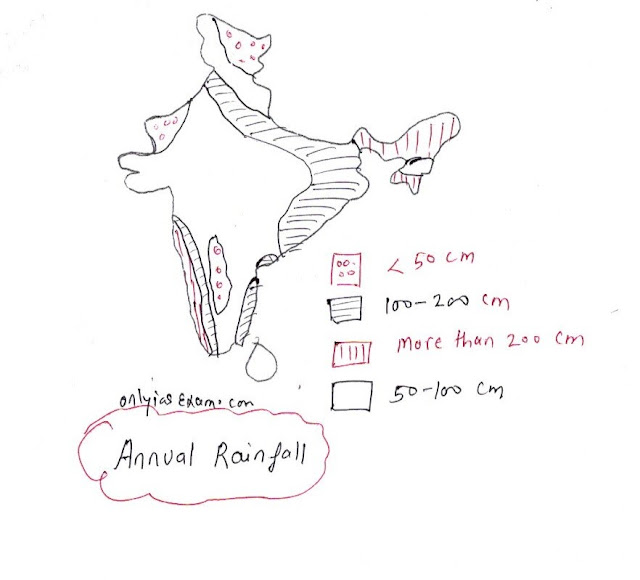Question.
Notwithstanding the broad climatic unity, the climate of India has many regional variations. Elaborate on this statement by giving suitable examples.
(Chapter-4 Climate, Class 11 NCERT geography "India Physical Environment")
Answer.
The monsoon climate unites not only the Indian people but also the Indian subcontinent and the South Asian nation. However, there are also many regional variations in the climate of India; These regional variations in climate can be described as sub-types of monsoon climate.
Temperature and rainfall are two major components of climate. The following statement gives suitable examples of the many regional variations in the climate of India.
First, let's look at the regional variation in temperature -
Churu in Rajasthan reaches 50 °C or more on a June day, while Tawang (Arunachal Pradesh) barely reaches 19 °C on the same day.
On December nights, the temperature in Drass (Ladakh) drops to minus 45 °C, while on the same night in Thiruvananthapuram or Chennai, the temperature is 20 °C or 22 °C.
The mercury sometimes reaches 55 degrees Celsius in western Rajasthan in summer while it goes down to minus 45 degree Celsius in winter around Leh.
In Kerala and the Andaman Islands, there is hardly a difference of seven or eight degrees Celsius between day and night temperatures. But in the Thar desert, this day's temperature is around 50°C, then it reaches 15°-20°C at night.
Let us now look at the regional variations in rainfall in India -
Rainfall occurs in the Himalayas in the form of snowfall while it rains in the rest of the country.
Cherrapunji and Mausinram in the Khasi Hills of Meghalaya receive more than 1,080 cm of rainfall in a year, with Jaisalmer in Rajasthan rarely receiving more than 9 cm of rainfall during a period of a year.
Cherrapunji, located in the Khasi Hills of Meghalaya, receives as much rain in a day as Jaisalmer does not receive even in 10 years.
The annual rainfall in the North Western Himalayas and the Western Desert is less than 10 cm while the annual rainfall in Meghalaya is more than 400 cm.
The Ganges Delta and the coastal plains of Odisha are affected by heavy rain storms approximately every third or fifth day in July and August, while the Coromandel Coast, a thousand km to the south, is generally dry during these months.
It is clear from the above example that there are regional variations in the climate of India.

ConversionConversion EmoticonEmoticon